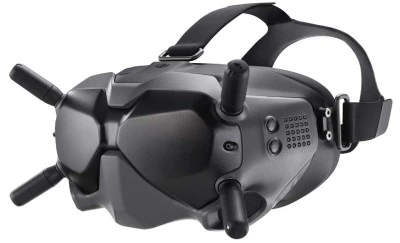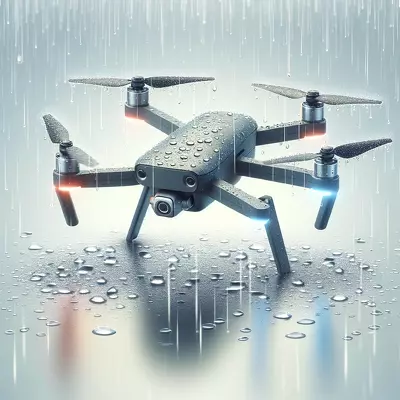Revolutionizing Delivery: How Amazon Uses Drones to Redefine Logistics

The emergence of drone technology in logistics represents a significant leap in delivery methods. This innovative approach, spearheaded by major companies, is reshaping how packages reach consumers. By embracing uncrewed aerial vehicles, these businesses aim to enhance efficiency and speed while tackling logistical challenges. The implementation of drones in package delivery marks a transformative period in the e-commerce and shipping industries, setting a new standard for rapid and convenient service.
I. Introduction
A. Evolution of Delivery Systems
The transformation of delivery systems has been a constant in commerce, evolving from traditional mail carriers to the rapid, digital-driven services of today. This evolution has been marked by a relentless pursuit of efficiency and speed, driven by growing consumer demand for immediacy. From the early days of horse-drawn carriages to modern, sophisticated logistics networks, the journey of delivery services has been one of innovation and constant change.
B. The Rise of Drone Technology in Logistics
In recent years, drone technology has emerged as a groundbreaking force in logistics, offering a promising solution to the challenges of speed and efficiency. Characterized by its agility and potential for rapid delivery, this technology has attracted significant attention and investment. The advent of drones in the delivery landscape is not just a testament to technological innovation but also a response to consumers’ ever-increasing expectations for faster, more reliable services.
II. Amazon’s Pioneering Role in Drone Delivery
A. Development of Amazon Prime Air
Amazon has been at the forefront of integrating drone technology into its delivery operations. The inception of Amazon Prime Air marked a bold step into the future of logistics. This initiative was driven by the vision to significantly reduce delivery times, promising packages to customers in 30 minutes or less. The development of Amazon Prime Air represents a significant milestone in the journey towards a more efficient and innovative delivery system.
B. Operational Milestones and Achievements
Several operational milestones and achievements have marked Amazon Prime Air’s journey. From successful test flights to regulatory approvals, each step has brought Amazon closer to realizing its vision of a drone-based delivery system. These milestones signify progress in the practical application of drone technology and highlight Amazon’s commitment to redefining the norms of delivery services.
C. Challenges and Limitations
Despite the promising potential of drone delivery, Amazon has faced its share of challenges and limitations. Regulatory hurdles, safety concerns, and technical obstacles have posed significant challenges to the widespread adoption of drone technology in logistics. These challenges underscore the complexities involved in integrating a new technology into an existing system and the need for a balanced approach that addresses safety, efficiency, and reliability.
III. Impact on the Delivery Industry
A. Efficiency and Speed
The integration of drones into the delivery industry promises unprecedented levels of efficiency and speed. Drones are capable of bypassing traditional road networks, reducing the time it takes for packages to reach their destinations. This efficiency is not just a boon for consumers, who benefit from faster delivery times, but also for businesses, which can optimize their operations and reduce costs.
B. Environmental Benefits
Drone delivery also offers significant environmental benefits. Electric-powered drones can replace conventional delivery vehicles, substantially reducing the delivery process’s carbon footprint. This shift towards more sustainable delivery methods is in line with global efforts to combat climate change and represents a responsible approach to logistics.
C. Shift in Consumer Expectations
The advent of drone technology in the delivery industry has led to a shift in consumer expectations. With the promise of faster, more efficient services, consumers are increasingly expecting higher standards from delivery providers. This shift is not just a challenge for businesses to keep up with but also an opportunity to innovate and redefine the delivery experience.
IV. Comparative Analysis
A. Amazon vs. Other Market Players
While Amazon has been a pioneer in drone delivery, other market players are just a little behind. Companies around the world are exploring the potential of drones to enhance their delivery services. This comparative analysis highlights the different approaches, strategies, and progress made by various companies in integrating drone technology into their operations.
B. International Perspectives on Drone Delivery
The adoption of drone technology in the delivery industry is not limited to any single region or country. Globally, there are varying perspectives and approaches to drone delivery. This section explores how different countries are embracing drone technology, the challenges they face, and the potential impact on global logistics.
V. Legal and Regulatory Landscape
A. Domestic Regulations
The integration of drones into commercial delivery systems has necessitated the development of robust legal and regulatory frameworks. In the United States, the Federal Aviation Administration (FAA) plays a crucial role in defining the rules and regulations governing the use of drones in delivery. This section delves into the specifics of domestic regulations, highlighting how they shape the operations of drone-based delivery services.
B. International Standards and Agreements
On the international stage, the use of drones for delivery is subject to a complex web of standards and agreements. These international frameworks aim to ensure safety, security, and efficiency in drone technology across borders. Understanding these standards and agreements is crucial for companies looking to expand their drone delivery operations globally.
C. Privacy and Security Concerns
The use of drones privacy and security. The capability of drones to capture images and data during their flights has sparked concerns among consumers and regulators alike. Ensuring that drone operations respect individual privacy and are secure from potential threats is paramount. This section examines the measures and strategies employed to address these concerns, emphasizing the importance of trust and responsibility in the era of drone delivery.
VI. Technological Advancements
A. Innovations in Drone Technology
The landscape of drone technology is one of rapid innovation and continuous improvement. Advances in battery life, navigation systems, and payload capacity are pushing the boundaries of what drones can achieve. This section explores the cutting-edge technological developments that are shaping the future of drone delivery, highlighting how these innovations are overcoming previous limitations and opening up new possibilities.
B. Integration with Other Emerging Technologies
Drone delivery does not exist in isolation but is part of a broader ecosystem of emerging technologies. The integration of drones with technologies such as artificial intelligence, machine learning, and the Internet of Things (IoT) is creating synergies that enhance the capabilities of delivery systems. This section discusses how the convergence of these technologies is leading to smarter, more autonomous, and highly efficient delivery solutions.
C. Future Prospects and Developments
Looking ahead, the potential of drone technology in the delivery industry is vast and full of possibilities. From urban air mobility to delivery networks in remote areas, drone applications are expanding. This section provides a glimpse into the future, envisioning how ongoing advancements and innovations will continue to transform the landscape of logistics and delivery services.
VII. FAQs
Q: Does Amazon currently use drones to deliver packages?
A: Yes, Amazon has been developing and testing its Prime Air drone delivery service, aiming to deliver packages to customers safely within 30 minutes of ordering.
Q: What are the weight limits for packages delivered by Amazon drones?
A: Amazon’s drones are designed to deliver packages weighing up to 5 pounds, which covers a significant portion of the items ordered on Amazon.
Q: How do Amazon delivery drones navigate?
A: Amazon drones use advanced sensors and computer vision systems to navigate and avoid obstacles, ensuring safe and precise delivery to the designated location.
Q: Are Amazon drone deliveries available everywhere?
A: Currently, drone delivery is in its testing phase and is only available in specific areas. Amazon is working with regulators to expand the service to more locations.
Q: How does Amazon ensure the safety of drone deliveries?
A: Amazon prioritizes safety and has implemented numerous safety measures, including rigorous testing, advanced navigation systems, and strict adherence to regulatory guidelines.
Q: Can customers choose drone delivery for their Amazon orders?
A: As of now, drone delivery is available by invitation only in select areas where Amazon is conducting trials. The service is yet to be widely available for all customers.
Q: What happens if a delivery drone encounters a problem during its flight?
A: Amazon’s drones are equipped with safety features designed to handle operational issues safely. This includes safe landing procedures and real-time monitoring to address any concerns immediately.
VIII. Conclusion
A. Summary of Amazon’s Journey with Drone Delivery
Amazon’s journey with drone delivery through its Prime Air service represents a remarkable endeavor in the field of logistics and e-commerce. The company’s commitment to innovation and customer satisfaction has driven it to explore this cutting-edge technology, overcoming challenges and achieving significant milestones along the way.
B. The Future of Logistics and E-commerce
The integration of drones into delivery systems signifies a transformative shift in logistics and e-commerce. As technology continues to evolve and regulatory frameworks become more accommodating, drone delivery is poised to become a more prevalent and efficient method of satisfying consumer demands, paving the way for a future where speed, efficiency, and sustainability are at the forefront of customer service.
IX. Suggested Readings
Staying informed is key in the ever-evolving world of logistics and drone technology. The following books offer valuable insights into drone delivery, logistics, and the future of e-commerce. They provide a deeper understanding of the complexities and potential of drone technology in transforming the delivery industry.
- “Drones in Logistics: A Practical Guide” – A comprehensive resource that explores the practical aspects of using drones in logistics and supply chain management, including operational challenges and real-world applications.
- “The Drone Age: How Drone Technology Will Change War and Peace” – This book delves into the broader implications of drone technology, examining its impact not only in commerce but also in military and civilian contexts.
- “Drone Technology in Architecture, Engineering and Construction: A Strategic Guide to Unmanned Aerial Vehicle Operation and Implementation” – While focusing on the AEC industry, this book provides insights into the technical, legal, and operational aspects of drone technology that are applicable to a broader audience.
- “The Future of Drone Use: Opportunities and Threats from Ethical and Legal Perspectives” – This book offers a multidisciplinary approach to understanding the ethical and legal challenges associated with drone technology, providing a well-rounded perspective on its use in various industries.
- “Delivery by Drone: An Exploration of the Future of Logistics” – This book specifically explores the future of logistics through the lens of drone delivery, discussing the potential transformations in the industry and the challenges that lie ahead.
These resources serve as a gateway to understanding the multifaceted nature of drone technology and its potential to revolutionize delivery systems and beyond. Whether you’re a professional in the logistics industry, a technology enthusiast, or simply curious about the future of delivery, these books offer valuable insights and perspectives.





